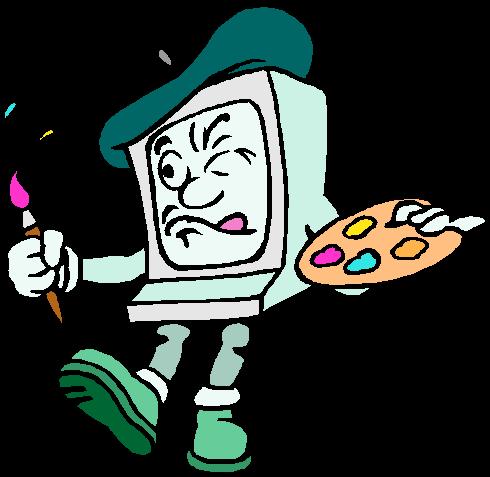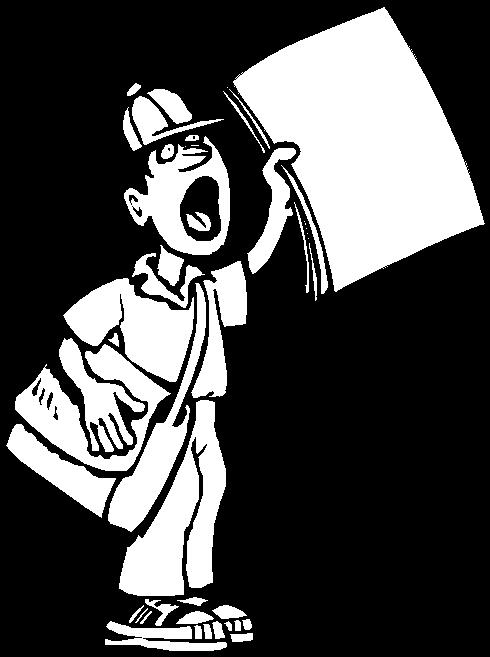BOOKS FOR YOU TO READ AND DOWNLOAD
- Lanuage In Science by
M. S. Thirumalai, Ph.D. - Vocabulary Education by
B. Mallikarjun, Ph.D. - A CONTRASTIVE ANALYSIS OF HINDI AND MALAYALAM by V. Geethakumary, Ph.D.
- LANGUAGE OF ADVERTISEMENTS IN TAMIL by Sandhya Nayak, Ph.D.
- An Introduction to TESOL: Methods of Teaching English to Speakers of Other Languages by M. S. Thirumalai, Ph.D.
- Transformation of Natural Language into Indexing Language: Kannada - A Case Study by B. A. Sharada, Ph.D.
- How to Learn Another Language? by M.S.Thirumalai, Ph.D.
- Verbal Communication with CP Children by Shyamala Chengappa, Ph.D. and M.S.Thirumalai, Ph.D.
- Bringing Order to Linguistic Diversity - Language Planning in the British Raj by
Ranjit Singh Rangila,
M. S. Thirumalai,
and B. Mallikarjun
REFERENCE MATERIAL
- Lord Macaulay and His Minute on Indian Education
- Languages of India, Census of India 1991
- The Constitution of India: Provisions Relating to Languages
- The Official Languages Act, 1963 (As Amended 1967)
- Mother Tongues of India, According to 1961 Census of India
BACK ISSUES
- FROM MARCH 2001
- FROM JANUARY 2002
- INDEX OF ARTICLES FROM MARCH, 2001 - FEB. 2003
- INDEX OF AUTHORS AND THEIR ARTICLES FROM MARCH, 2001 - MARCH 2003
- E-mail your articles and book-length reports to thirumalai@bethfel.org or send your floppy disk (preferably in Microsoft Word) by regular mail to:
M. S. Thirumalai
6820 Auto Club Road #320
Bloomington, MN 55438 USA. - Contributors from South Asia may send their articles to
B. Mallikarjun,
Central Institute of Indian Languages,
Manasagangotri,
Mysore 570006, India or e-mail to mallik_ciil@hotmail.com. - Your articles and booklength reports should be written following the MLA, LSA, or IJDL Stylesheet.
- The Editorial Board has the right to accept, reject, or suggest modifications to the articles submitted for publication, and to make suitable stylistic adjustments. High quality, academic integrity, ethics and morals are expected from the authors and discussants.
Copyright © 2001
M. S. Thirumalai
INDIAN MASS MEDIA AND LANGUAGE EDUCATION
L. Manjulakshi, Ph.D.

1. INTRODUCTION: WRITTEN AND SPOKEN WORDS
Communication includes all methods of disseminating information, knowledge, thought, attitudes, and beliefs. Modern mass media like newspapers, cinema, and television, and traditional media of social communication like the bazaar, puppet show, drama, dance, local meetings, as well as inter-personal communication media like posts and telegraphs, teleprinters, and telephones all impact language use. The underlying and basic factor of these categories of mass media is language. Hence for the effectual and proper utilisation of these mass media, language education is very essential and material.
Inter-personal communication media helps meet the demand for mutual communication and exchange of information among people and institutions. In recent years, the use of computer has far reaching effect on language education and communication. In this field also language education is of paramount importance.
The special feature of radio, television, and cinema is that they serve the needs of both literates and illiterates. They will also entertain people in remote areas not within the reach of newspapers. On the other hand, newspapers present the 'written word' and serve as 'record,' while at the same time give local coverage. Language education to the audience, readers and spectators is very essential.
2. LANGUAGE AND MASS COMMUNICATION: USE OF FORMAL AND INFORMAL STYLES
In India, various forms of language are in competition with each other to draw the attention of the public. These forms range from the extremely informal style of speech found in the radio and the cinema to the formal styles found in newspapers and news broadcasts. Different language styles perform different functions in society. The styles of standard languages constantly undergo changes and development through the impact of various mass communication media.
Formal public education is one of the most powerful tools that influences linguistic norms and linguistic attitudes. Sarvagna, a medieval Kannada poet said, "An expression properly chosen and aptly used is like a ripe fruit of excellence". This is true not only in a language used in inter-personal communication, but also in language styles used in different fields of mass communication media like literature, cinema, radio, television, newspapers, etc.
Another important aspect of language education in India is culture learning. One learns a language through being culturally aware. Thus there is inter-relationship and reinforcement between language and culture. They are inter-dependent. News texts are part of what a particular culture thinks of as significant, and show a hierarchy of values.
3. NEWSPAPER: MASS MEDIA LANGUAGE
The newspaper is 'talk' about world affairs and current events, having multifarious functions in society such as disseminating information, socialisation, motivation, education, cultural learning, entertainment, integration, etc. Most newspapers in Indian languages appear to focus on the readability of the material or news they present. They recognize that the way language is used is an important factor in enabling their readers to come back to them. But language alone does not help a newspaper to increase its sale in the market place. In a country where everything is looked at from a political angle, the support base for a newspaper in Indian languages often comes from the shades of political opinion that a newspaper supports and highlights. The manner a news item is presented and highlighted depends on the "ideology" of the newspapers. This "ideology" controls and regulates language use.
Of the different mass media, newspapers assume great importance as they deal every day with dissemination of current information pertaining to different aspects of human life, such as social, economic, political and cultural, both at national and international levels.
In a newspaper, headlines occupy a prominent position by summarising the most important news of the day in a nutshell, which facilitates the reader with quick reading and comprehension. The choice of expression plays a vital role in making the headlines more effective. Thus language plays a prominent part and it aims at educating the reader. At present Indian language newspapers show a tendency to use simpler and colloquial forms of expression more frequently. Newspapers in Indian languages at present have also begun to use loaded expressions with sarcasm and cynicism, because the growing middle class around the nation that buys and reads the newspapers is basically cynical about politics and politicians.
The newspapers are educators of the literate and not so literate public. Now-a-days newspaper reading habit is growing rapidly and widely. Thus there is the steady and expanding process of language education through newspapers. The educated families in south India a generation ago made it a point to read THE HINDU daily newspaper as part of their daily English education.
History reveals that the Press Acts against vernacular press in British India actually helped the people to seek greater freedom and ultimately independence from Britain. Political, social, and economic revolutions in India are closely related to the active involvement and development of newspapers in Indian languages. The prose of every Indian language is critically developed and guided by the language style used in the newspapers published in these languages. In order to establish their own identity, newspapers deliberately coin and choose their own language expressions. For example, there is a great tendency these days to combine various native words with English words to create special expressions. Translation is no more a fashion with most Indian languages newspapers. Some thirty years ago, most Indian languages newspapers made special effort to translate words and phrases in to Indian languages. Now they tend to simply transcribe foreign words in the native script. This tendency is supported by the spread of cable TV as well as by the globalization process.
Further in a democratic country like India, the newspaper acts as a powerful weapon in exposing the irregularities, shortcomings, and failures of government policy and also function as an eye-opener of the public. But newspapers should not abuse their status and functions. They should be above bias and should be fair and impartial. The language used should be of high standard aiming at educating the public not only in terms of news content but also in terms of language use. This twin function is not wholly appreciated or even discerned in some newspapers that seek only sensationalism in content and expression.
4. RADIO: MASS MEDIA LANGUAGE
Radio has greater potential in mass communication than the newspaper for two reasons. Firstly, it reaches even the remote corners of the country and has no physical impediments. Secondly, it imparts language education and provides entertainment and disseminates information to both literate and illiterate listeners. Radio is under government control for fear of its misuse and powerful influence. There are indications that soon we will have privately owned radio stations with their own programs of broadcasts all over the country. The range of programmes includes a wide variety of educational, cultural and entertainment items, aimed at a broad spectrum of classes of people.
The type of language used in government-controlled radio stations, unfortunately, seems to be artificial in its idiom in the broadcasts done in all Indian languages. The broadcasts for farmers and workers try to use a style that is supposedly understood by less literate groups. We are yet to find a balance in the broadcasts that suit the audience for which these are intended. But the broadcasts are not as appropriate as these should be for the simple reason that these broadcasts are still largely government-controlled. Radio has a major role to play in language. The language used in radio impacted the previous generation very much. News broadcasts introduced chaste language, closely modelled after the written variety. The newsreaders introduced standard pronunciation values to the phonemes, words, phrases, and sentences. The impact of radio language was heavy upon the written style, rather than on the spoken idiom. This is somewhat strange, considering the fact that radio is mainly an audio form. It appears that Indian radio is more closely associated with news and music than with dialogue.
5. TELEVISION: MASS MEDIA LANGUAGE
Television is the audio-visual non-literary media having the additional advantage of being able to use visual cues to reinforce the information being presented in spoken form. Thus even in this field language education plays a vital role, because additional cues compensate for dialectal differences between speakers and hearers. The potential of television as an educative device is very great. But exploiting this potential depends upon the choice of appropriate language.
TV programs are telecast through satellites. The satellite TV offers a dazzling array of channels and programme choices in many different languages. The divide between the literate and less literate or non-literate classes is covered up in the television media. Media discourse provides a fertile ground for traditional cultural learning, even as it provides opportunities to entertain and educate the viewers in novel and wholly modern ways that work against traditional values. Unfortunately, TV is more cinema-centered than radio. Entertainment takes precedence in TV. The impact of TV on Indian languages, in terms of their lexicon and structure, so far seems to be negligible. Privately owned TV channels often follow the models set by the leading newspapers in their coverage.
6. THE CINEMA: MASS MEDIA LANGUAGE
The language of cinema, on the whole, is more accessible to the average person than that of other media. The movies, in general, make use of colloquial style of speech. The language of the cinema, like that of other media, also shows considerable variation. The cinema, being closer to informal popular speech, has two advantages: (1) It appeals to mass audience, and (2) it portrays everyday situations wherein popular language is more appropriate than the more formal variety. In the village context the cinema competes with other forms of entertainment because it assesses a more popular language.
There is, however, a serious problem. Until early seventies, most movies in Indian languages often followed a style that was closer to the written style. These days, movies are produced mostly in the colloquial idiom, except those movies that try to depict the heritage through mythology, etc. A movie viewer does not get introduced to the written variety now a day. Since in many Indian languages the distinction between the formal and informal styles of language or the distinction between the colloquial/spoken and written styles are still maintained, the usefulness of watching a movie in order to improve the competence in mother tongue is practically less significant.
7. THE COMPUTER REVOLUTION: MASS MEDIA LANGUAGE
The computer Revolution in teaching Indian languages is still not yet widespread, despite the fact that computer software engineering is the most preferred profession for the educated young men and women in India. Driven by economic pursuits and greed, Indians seem to be competing with one another in offering their services to enrich the already rich nations. And yet, it is a fact that the presence of Indian languages in the world-wide-web is more significant than any other group of languages in the developing world.
Certain Indian linguistic groups such as Kannadigas, Telugus, and Tamils seem to be more advanced in taking advantage of the computer revolution to improve their language education. There is a significant impact in language use brought out by the use of e-mail. Abbreviations even in Indian languages seem to be used more commonly these days. Once upon a time, inscriptions in copper plates and stones used abbreviations as a means to communicate information in short sentences, etc. Time was not the main consideration when a few generations ago Indians used lots of abbreviations in spelling and combination of letters in their written documents. But, for this generation, time is an important consideration and they use abbreviations of different sorts in their e-mails, and chats. People want to be different from one another, especially from one generation to another. Wireless, cell phone abbreviations become the dominant feature of urban young men and women these days. Languages are mangled or deconstructed in an idiosyncratic manner.
Indian languages find a significant place in the Unicode. This is a great contribution from the energetic Indian software engineers. However, just like the technical terms created by committees constituted by various governments and their agencies, the use of Unicode characters allotted to Indian languages are not yet popular with the Indian public. I do not think that they will ever become popular, because the balance of convenience seems to rest with the use of English in this present generation in India.
Computers store material and keep them in memory. They express the correct use of language. They furnish valuable information concerning various subjects. They operate at high speed and provide opportunity for rectifying and correcting mistakes and errors. Thus the computer, mainly having literary merits, plays a very significant role in language education. It provides knowledge and information in almost all the major languages, both national and international.
8. CONCLUSION
In India there is diversity in languages, and the formation of linguistic states has given impetus and importance to regional languages. There are newspapers in regional languages that have wider circulation than English or Hindi newspapers. Likewise there are separate channels for each regional language in television and they provide entertainment programmes and news bulletins in that language, which will be more purposeful and effective in imparting education. Yet, the picture continues to be hazy, because with the growth of English education and new job opportunities, people seem to prefer to adopt English as an essential part of their education.
Colophon I am grateful to K. Narayana Devaraiah, C.I.I.L, and M. S. Thirumalai for their valuable comments and suggestions which helped me to improve the quality of my paper.
HOME PAGE | BACK ISSUES | A Study of Assamese Hindu Male Names | Cognitive Processes in Writing: Exploring the Strategies Used by Second and Foreign Language Learners of English | Lord Macaulay: The Man Who Started It All and His Minute | Indian Mass Media and Language Education | Urdu in Andhra Pradesh | Computational Morphology of Tamil Verbal complex | Science Policy: Empowering Indian Languages vis-a-vis English -- A Review of H.R.Dua's Science Policy, Education, and Language Planning | SOME NEW BOOKS IN INDIAN LINGUISTICS | CONTACT EDITOR
L. Manjulakshi, Ph.D.
University of Mysore
Mysore-570006, India
E-mail: Manjulakshiin@yahoo.com





